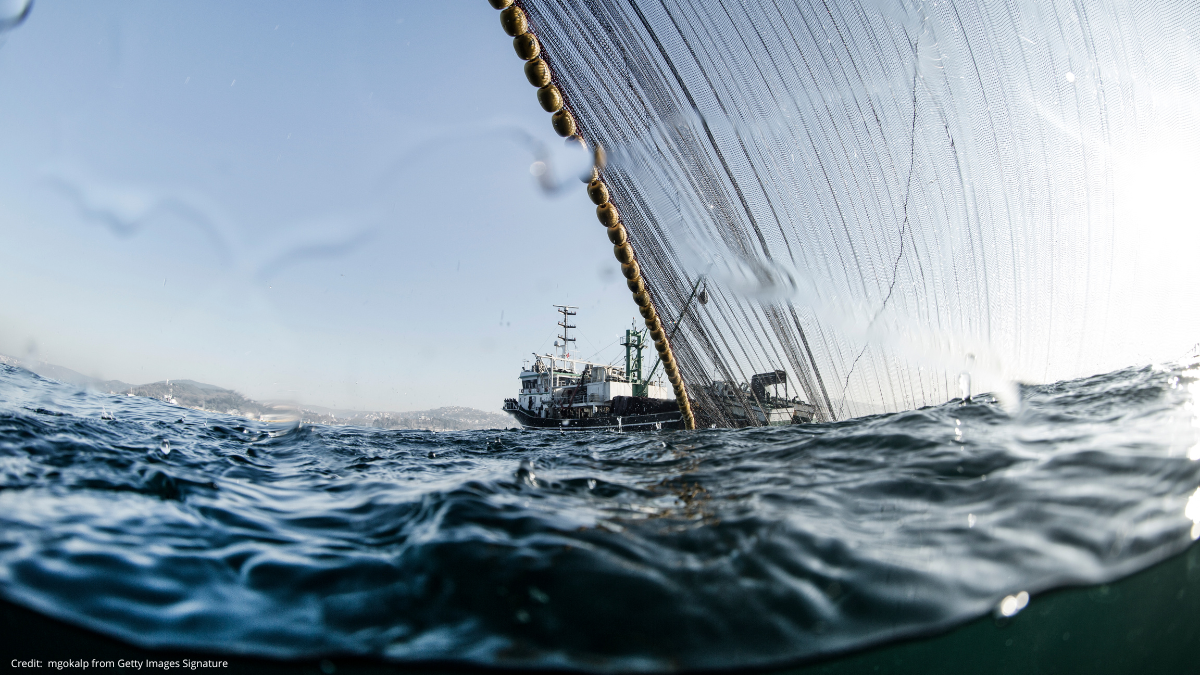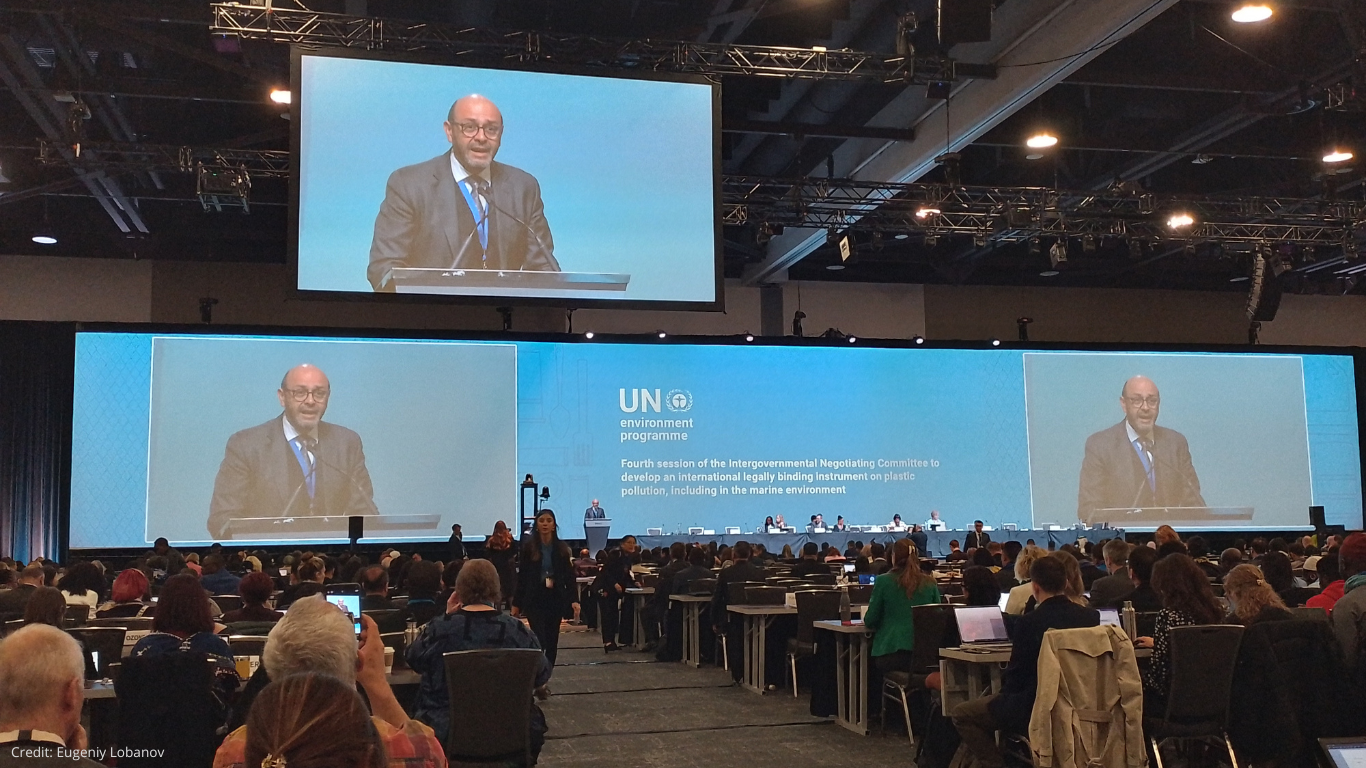CMS grants the endangered Baltic Proper Harbour Porpoise the highest protection status following concerted action from NGOs
The common harbour porpoise is critically endangered in the central Baltic Sea and off the Iberian Peninsula, with only a few hundred individuals left. However, effective measures to enable the recovery of these special populations have so far been lacking. At the meeting of the UN Convention on Migratory Species (CMS COP14, 12-17 Feb 2024), the Baltic Proper harbour porpoise has now been included in Appendix I: This recognises this sub-population as critically endangered and emergency measures can be taken to save it.

15 February 2024 (Joint Press Release) -
Whale and Dolphin Conservation, Humane Society International, Coalition Clean Baltic and ORCA made a decisive contribution to the decision. Last year, they submitted a
joint report to CMS on the Concerted Action to call for stronger protections for the harbour porpoise populations in the Baltic Proper and off the Iberian Peninsula and to restore their habitats. As a result, the CMS member states of the EU
submitted a proposal for the harbour porpoise to be included in
Appendix I of the Convention, thereby granting it the highest protection status and enabling priority conservation measures to be taken. The uplisting has now been granted by CMS. The aim is to prevent, remove or mitigate obstacles to their seasonal migration and to control other factors that might endanger their survival. The main threats to the Baltic proper harbour porpoise include bycatch, underwater noise and pollution.
"We are very pleased that the critical situation of these unique populations has been acknowledged; and we strongly encourage the countries around the Baltic Sea to take urgent action to ensure the survival of the only whale species native to the Baltic Sea", says Ida Carlén, formerly with the Coalition Clean Baltic, now Senior Policy Officer at the Swedish Society for Nature Conservation.
"The uplisting of the Baltic Proper harbour porpoise to Appendix I of CMS is an important milestone that has been the result of years of hard work by NGOs. This positive outcome demonstrates the value and much-needed capacity that civil society can bring to international conservation objectives", says Ed Goodall, Head of intergovernmental engagement at WDC.
The group of NGOs have long standing experience and have been working for decades in the development of marine conservation and policy, providing advice to governments and the EU as well as by raising awareness through campaigns and petitions. The uplisting of the Baltic Proper harbour porpoise to Appendix I of CMS is a further step forward in the implementation of effective conservation measures to protect this population.
END
Supporting information
The Harbour Porpoise is one of the smallest species within the larger family of whales, dolphins and porpoises. The genetically distinct Baltic Proper harbour porpoise sub-population is listed as Critically Endangered by IUCN as well as HELCOM, the regional seas convention in the Baltic Sea. There are only a few hundred individuals left in this population, which declined severely in the 1960-1970s due to being caught in fishing nets, particularly the highly deadly gillnet fisheries. They also suffer from high levels of toxic pollutants such as PCBs and dioxins. Due to ongoing pressure, the population has not recovered since.
Bycatch is the main threat to the only resident cetacean native to the Baltic Sea. However, environmental contaminants, underwater noise and the effects of climate change on the marine ecosystem, food availability and natural habitats also pose a threat to the harbour porpoise.
In the process of the CMS Concerted Action, the NGO alliance of Whale and Dolphin Conservation (WDC), Humane Society International (HSI), Coalition Clean Baltic (CCB) and ORCA has also supported the so-called Jastarnia plan of ASCOBANS, a recovery plan for the Baltic harbour porpoise. This involves advising EU governments on measures to reduce bycatch. The NGOs maintain countries need to do much more to mitigate bycatch and implement and monitor effective conservation measures to help populations recover.
The only survey on abundance and distribution of the Baltic Proper harbour porpoise was conducted by the SAMBAH project in 2011-2013. In 2024-2025 a second survey, SAMBAH II, will be conducted, which will be critical in assessing the current status of the population.
WDC conducted an awareness-raising campaign for the Baltic Proper harbour porpoise with the aim of achieving a year-round ban on gillnets in marine protected areas. A petition with more than 100,000 signatures was submitted to the German government in September 2021. WDC also initiated an open letter to the German government, signed by more than 100 cetacean experts from around the world, calling for effective measures to protect the Baltic Proper harbour porpoise. WDC's educational work continues to this day.
CCB and been engaged in awareness raising activities for the Baltic Proper harbour porpoise during this period, through a number of publications, press releases, events and educational activities. A CCB #SavetheBalticPorpoise petition was delivered to the EU Commissioner for Environment, Ocean and Fisheries, Virginijus Sinkevičius, in Helsinki, in November 2022 with over 120,000 signatures. Awareness raising and policy advocacy for this population remain as some of the main activities at CCB, with support of the Swedish Society for Nature Conservation (SSNC).
CONTACT
Coalition Clean Baltic Coalition Clean Baltic (CCB)
has been active in the conservation of the Baltic Sea harbour porpoises for well over a decade. CCB has until recently coordinated two of the three ASCOBANS harbour porpoise conservation plans, and also works in other projects to improve the awareness and conservation status for the Baltic Sea harbour porpoise.
Contact: Andrea Cervantes, andrea.cervantes@ccb.se
and Ida Carlén, Swedish Society for Nature Conservation, ida.carlen@naturskyddsforeningen.se
Whale and Dolphin Conservation Whale and Dolphin Conservation (WDC)
has been working for over thirty years protecting whales and dolphins around the globe from the challenges they face every day. With extensive experience funding vital conservation, education and research projects, WDC is a global authority on whale and dolphin issues.
Contact: Ed Goodall, ed.goodall@whales.org
Humane Society International (HSI)
is one of the largest and most effective animal protection organisations in the world, with offices in a number of European countries and elsewhere. It has a long history of working on marine wildlife issues including within the context of CMS, ASCOBANS and ACCOBAMS.
Contact: Rodi Rosensweig, rrosensweig@humanesociety.org
ORCA
is a UK-based whale and dolphin conservation charity, dedicated to the long-term protection of whales, dolphins and porpoises throughout UK, European and global waters. ORCA has been collecting scientific data on the density, distribution and range of cetacean species within European waters since 1995, specialising in dedicated distance sampling survey effort, utilising citizen science and platforms of opportunity.
Contact: Lucy Babey, lucy@orca.org.uk

